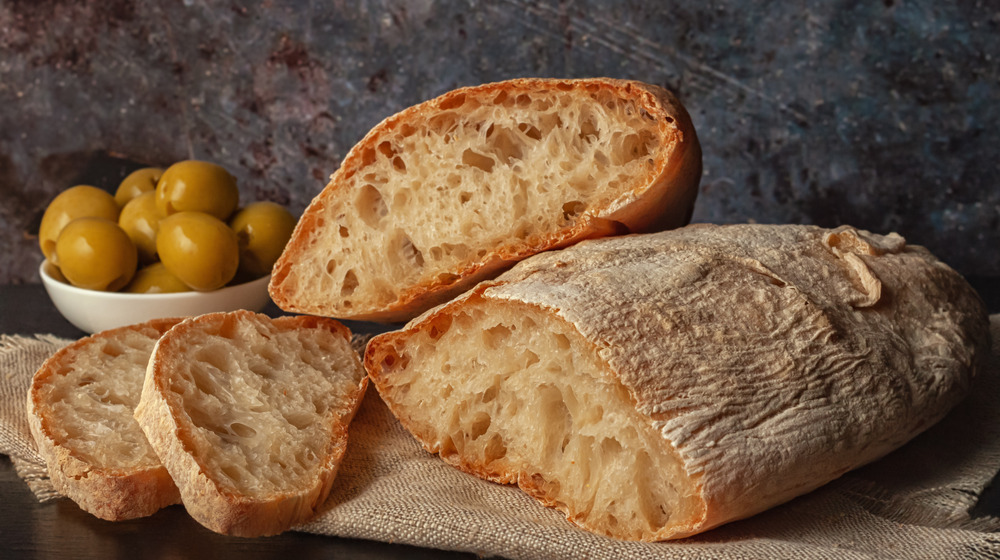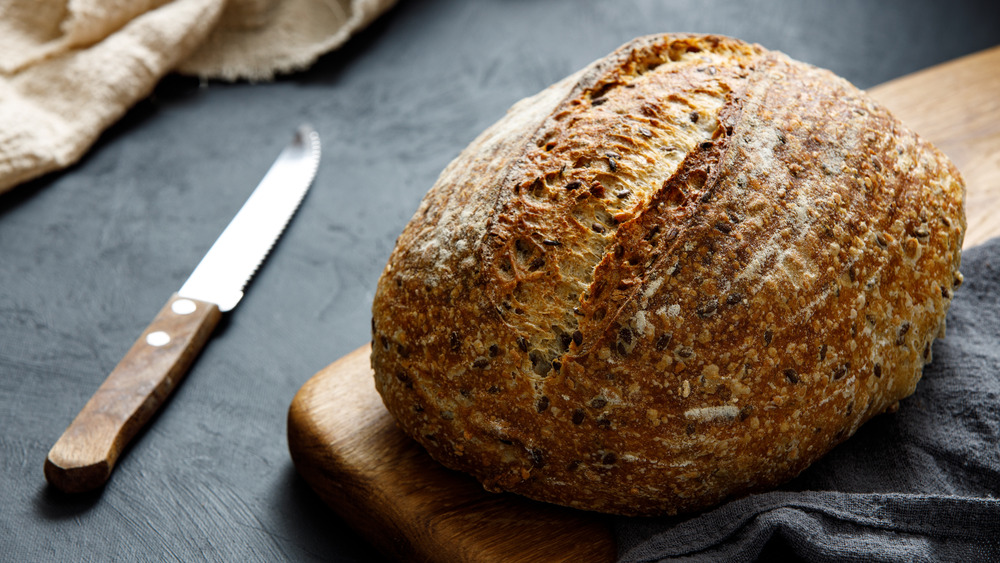How Are Ciabatta And Sourdough Different?
If there's one thing most people can agree on, it's that bread is delicious. From sourdough to ciabatta to baguettes and beyond, there are so many tasty options. But aside from shape, what is it exactly that separates the different varieties of bread? Taste Essence listed 25 of the hundreds of varieties of breads out there, and each one of those varietals comes with a unique recipe that gives each loaf its own flavor profile, texture, and character.
Two of the most popular bread varieties are ciabatta and sourdough. Abigail's Bakery found that ciabatta has been steadily rising in popularity since the '90s, with particular emphasis on its use in panini in the 21st century. As for sourdough, its recent claim to fame is as the baking bread of choice for quarantine bandwagon bakers for a variety of reasons, including its nutritious elements and lack of need for yeast (via Clean Plates). There has to be a reason some choose to bake, or just eat, one of these over another; let's find out what those reasons are!
Sourdough vs. ciabatta
The "sour" in sourdough, according to Foods Guy, comes from a "slow-fermented live 'wild' yeast starter instead of dry yeast", made from only flour and water. The ingredients develop a flurry of nutritious elements including probiotics (good for the gut) due to the fermented elements. Its sour flavor and chewy texture is incredibly enticing even without any toppings because sourdough bread has such depth and character.
Ciabatta, on the other hand, is said to be "one Italian baker's answer to constant requests for the popular French baguette," to which it bears some (but not all) similarity to. It's made with high gluten flour and more olive oil than typical bread, as well as a starter that's similar to sourdough, but less fermented. Ciabatta also takes much less time to make; whereas sourdough takes about 24 to 48 hours just for prep, ciabatta takes a little over two hours max. The result, as Angela's Bakery noted, is a panini-perfect bread that's dense inside and crunchy outside with just enough aeration and a mild, but enjoyable flavor.
So, while ciabatta and sourdough may look similar, their taste and make are very different. Bread lovers, maybe it's worth an experiment to see — and more importantly taste — all of this for yourself!

